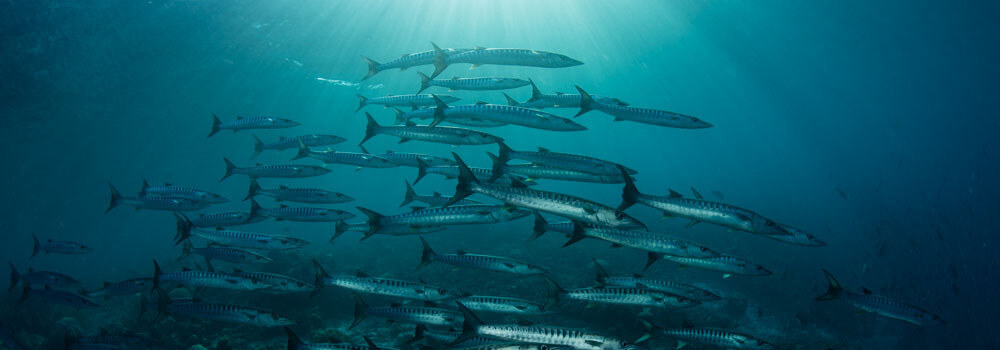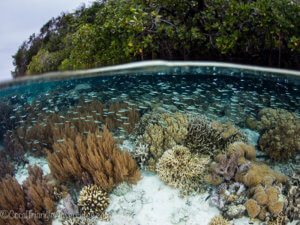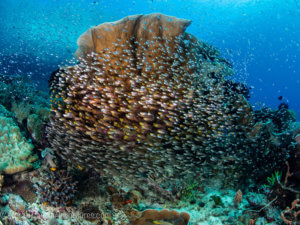
Snorkeling to see schooling behavior in Raja Ampat
There’s no single way to accurately describe the experience of being in Raja Ampat’s waters. One could use every adjective known in the attempt to generate a picture of what it’s like. One of the many common themes found on just about any Raja Ampat snorkeling site are massive schools of fish, which begs the question: why do fish school?
A rather obvious purpose for schooling behavior is to reduce the chances of being preyed upon. Predators may have a more difficult time focusing on a single prey when there are hundreds of other fish within close proximity. Increasing the efficiency of feeding is another purpose for some schooling fish. Mob feeding is an example. When a school of surgeonfish and/or parrotfish swarm over a reef feeding on algae they overwhelm species, such as farmerfish, that may be trying to protect their algal food sources. Often associated with lunar periodicity, many species of fish school together to spawn. It’s a lot easier to find a mate within a large school than it would be to find a single fish of the opposite sex just meandering along any reef. And, another purpose for fish schooling, especially in areas with strong currents, would be for the increased hydrodynamic efficiency. In other words, fish within a school can draft off one another and save energy better put to use in other ways.

Silversides

School of scad

Golden sweepers
There may be other purposes that fish school depending on the species and the environmental context in which they live so it is an interesting question to ponder while out observing the incredible reefs of Raja Ampat!
For more stories about Raja Ampat and to read the latest trip report from our recent time there, please go to our Trip Reports/Blog page.
